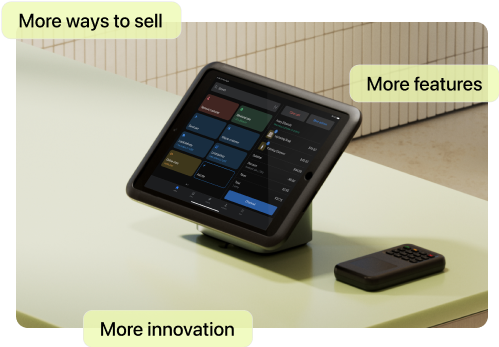Foreign transaction fees are typical when travelling internationally. You head to Genoa, buy a little rigatoni, and pay a 3% surcharge when you use your credit card. Unless you use a card with travel perks, the fee is just par for the course.
When you sell products to overseas customers, a few extra costs might be tacked on to the transaction for both you and your customer. The customer’s credit card issuer may charge them foreign transaction fees, and your payment processor might charge you foreign currency transaction fees of its own. These fees can also come into play when you’re the purchaser, such as when you buy products from foreign merchants to supply your business.
Foreign transaction fees can add up over time. Here’s what ecommerce sellers should know about foreign transaction fees and how to keep them low.
What is a foreign transaction fee?
A foreign transaction fee, sometimes known as an FX fee, is a type of convenience charge for purchases in foreign countries. Travelers typically pay FX fees when making credit card purchases while traveling abroad. Credit card companies commonly charge foreign transaction fees as a percentage of purchases, usually around 3%. So, if you take a trip abroad and buy a $100 pair of shoes with a credit card with a 3% foreign transaction fee, you’ll pay an extra $3 on the purchase.
Foreign transaction fees vary with each card issuer and specific card, and not all credit cards charge this type of fee. Some issuers may even absorb the credit card network fee on some or all of their credit cards. To avoid paying foreign transaction fees, research credit cards designed for travelers that function overseas just like they would at home—without added fees.
How foreign transaction fees work
Foreign transaction fees are typical when traveling abroad, and can also apply to customers of businesses selling in international markets.
Here’s how they apply to travelers:
-
Currency conversion fee. Credit card networks, such as Visa and Mastercard, charge a network fee to convert the charge into your local currency. This currency exchange fee is often calculated as 1% of the purchase price.
-
Issuing bank fee. Credit card issuers, such as Chase or Bank of America, may add their own charge in addition to the network charge. The issuing bank fee is typically 1% to 2% of the purchase price.
Here’s how foreign transaction fees might apply to domestic businesses, including ecommerce sellers:
-
Payment processor fees. When your online store accepts international payments, your payment processor can add FX fees to the transaction.
-
Credit card fees. When you use a business credit card to buy products overseas, your card issuer may charge foreign transaction fees of 1% to 3% of the purchase price.
Here is an example of a fee breakdown if a customer in Europe were to purchase a $100 pair of shoes from your business in the US:
1. The credit card issuer converts the currency
The customer’s card issuer converts the amount from USD to euros based on the exchange rate at the time. For example, a conversion rate of USD/EUR 0.90 means $1 USD is exchanged for €0.90 EUR. The customer would pay €90 for the pair of shoes.
2. The card issuer may adjust the exchange rate
Banks often apply a 1% to 4% markup to the exchange rate. For example, if the real exchange rate is USD/EUR 0.90 and the customer’s bank marks up the conversion rate by 2%, then the rate increases to USD/EUR 0.918. The customer would then pay €91.80 EUR for the pair of shoes.
3. The card issuer may charge an FX fee
Once the payment is in euros, the credit card issuer may charge the customer a foreign transaction fee of 3%. That fee comes out to €2.75 on a €91.80 pair of shoes. The card issuer may add the purchase and the fee to the customer’s credit card statement as two line items: €91.80 for the shoes and €2.75 for the fee or as one line item: €94.55
4. Your payment processor charges you a fee
Let’s say your processor charges 4.4% plus a fixed fee of 0.49¢ for this international type of transaction. The fee is applied to the transaction amount of $100 and comes out to $4.89. You receive $95.11 ($100 - $4.89) after processing costs.
🌟 Currency converter apps can help you easily manage worldwide transactions, allowing all your customers to see prices in their home currency. Discover the best real-time currency converter apps for ecommerce businesses.
Foreign transaction fee vs. currency conversion rate
A foreign transaction fee and a currency conversion rate both relate to spending money internationally, but they serve different purposes. Banks and credit card issuers charge FX fees for processing payments in a foreign currency or through a foreign-based merchant. The fee usually equals around 1% to 3% of the purchase price.
A currency conversion rate isn’t a fee—it’s the exchange rate a bank or credit card uses when converting one currency into another at the time of the transaction and may include a hidden markup.
For example, when you’re using your credit card abroad, you might be able to choose dynamic currency conversion (DCC). With this option, a foreign merchant offers to charge you in your home currency instead of the local currency. In these cases, you may be charged a higher exchange rate than if your home bank sets the rate and processes the conversion.
How do foreign transaction fees work on Shopify?
Shopify merchants have a few options for handling the foreign transaction fees that come with accepting international payments:
Managed Markets
Shopify offers a Managed Markets tool that facilitates cross-border sales for US-based merchants. When you set up Managed Markets for your storefront, overseas customers pay a 2.5% fee with each transaction. That FX fee is wrapped into the gross order total.
On your end, you pay a 6.5% per-transaction fee that covers international payment processing. Benefits of enrolling in Managed Markets includes a guaranteed conversion rate on refunds made within 30 days and a guaranteed estimate on duties and taxes at checkout.
Shopify Payments
Shopify Payments is a payment processor that allows you to accept payments directly through your Shopify store without a third-party payment provider. If you’re a merchant based in the US and make a sale in a different currency, Shopify Payments charges a currency conversion fee of 1.5% of the sales price. The customer absorbs this fee, which is included in the price they see at checkout. Their credit card issuer may add its own FX fee to the transaction (which you, the merchant, won’t pay).
Shopify Payments’ international processing fee averages 3.5% + 30¢ per transaction—which you pay, and the customer does not. It’s a standard fee covering the costs associated with handling and processing payments.
Third-party payment gateways
When using a third-party processor, like Stripe or PayPal, you might incur additional transaction fees set by the provider. Review their fee structure to understand the total cost per transaction. These can vary significantly between providers.
If you do pay international transaction fees associated with your business checking account or credit card, you may be able to write them off as a business expense. The same goes for merchant or transaction fees paid to a third-party payment processor, such as Stripe or PayPal.
Foreign transaction fee FAQ
How do I avoid foreign transaction fees?
Ecommerce sellers can avoid foreign transaction fees by partnering with US-based suppliers, shipping products in bulk to the US to minimize tariffs, and using business credit cards that don’t charge FX fees.
Why have I been charged a foreign transaction fee?
If you see foreign purchase transaction fees on your credit card bill, you likely made a purchase in a foreign currency or had a transaction processed through a foreign bank. This might happen when you’re using a credit card abroad or withdrawing cash in foreign currencies from your bank account. But it may also happen even when you’re unaware you made foreign purchases, such as when you’re shopping online with a merchant based in another country.
How much do foreign transaction fees cost?
A foreign transaction fee might add 2% to 5% to the cost of your foreign purchase. While the fee could amount to just a few dollars, they add up over time, especially for businesses that sell to customers around the world or import products.







